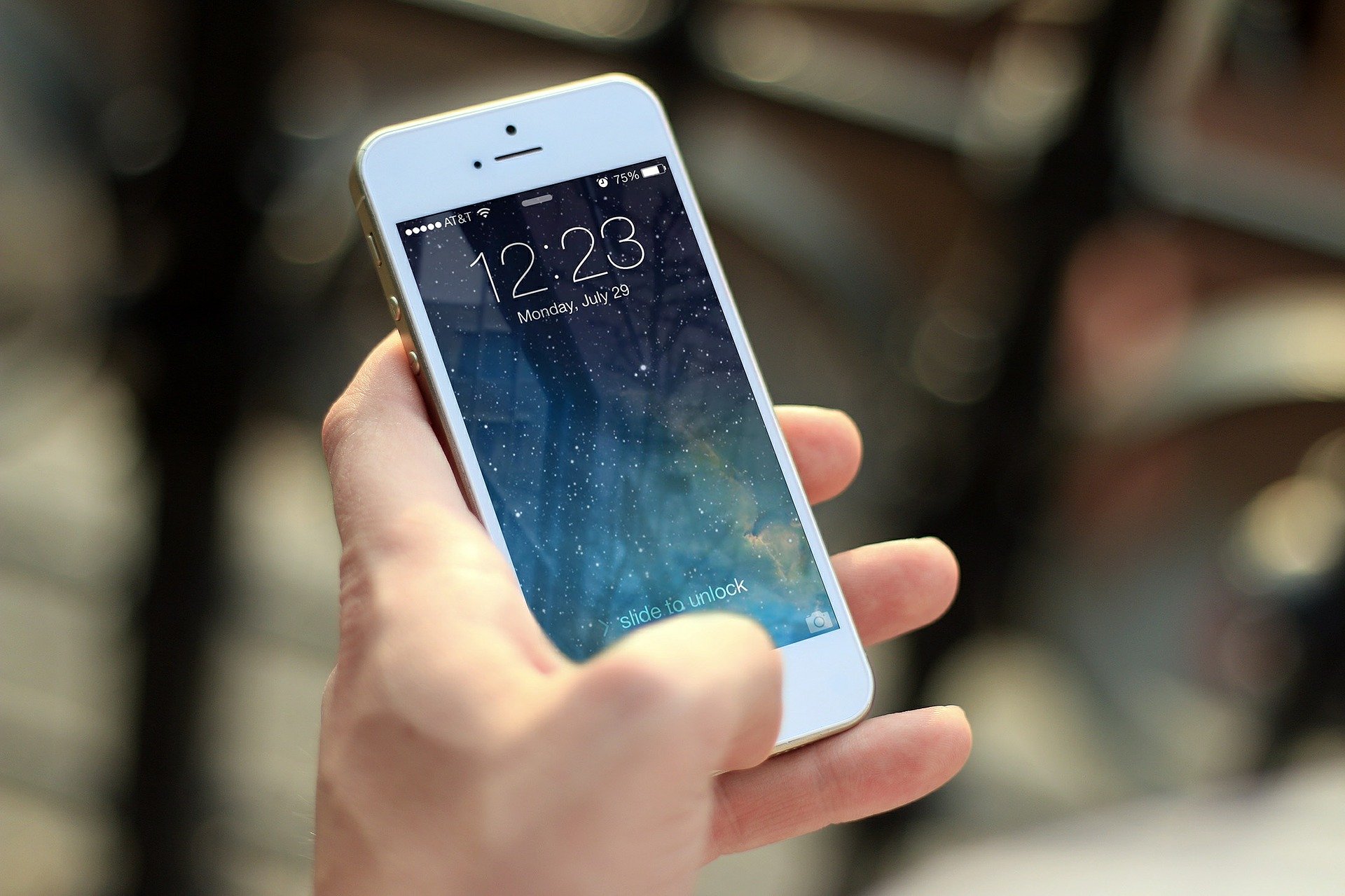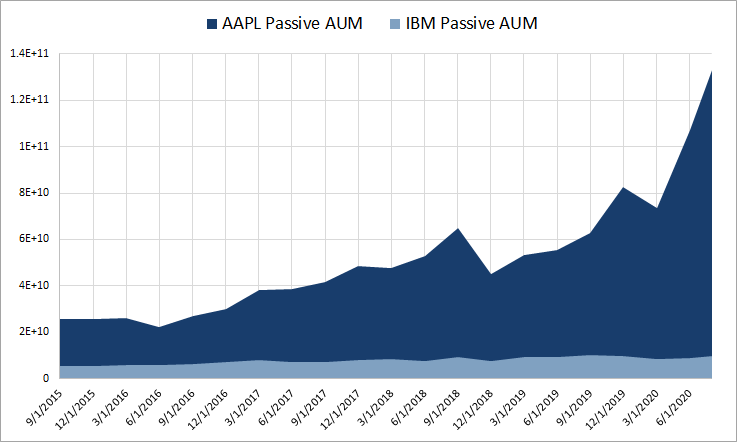Apple Has ‘Advantages’ That Are Too Big To Ignore
Submitted by Silverlight Asset Management, LLC on August 18th, 2020
It’s no secret Apple is on a roll. Still, the numbers are staggering. The iPhone maker’s shares have risen 57% year-to-date, making Apple Inc. worth just under $2 trillion.
Allegations of unfair and anti-competitive actions have surfaced in a lawsuit against Apple by Epic Games. In the filing, the plaintiff asserts Apple Inc. “is bigger, more powerful, more entrenched, and more pernicious than the monopolists of yesteryear.”
Whether Apple’s actions constitute monopolistic practices will be decided in the courts. However, it is clear Apple has several key “advantages” over other companies.
Advantage #1: The Fed
As of June 24, the Federal Reserve printed $8.7 billion to buy corporate bonds.
The Fed released a list of nearly 800 companies whose debt it intended to buy to help support financial markets. The individual bond purchases are executed through the newly created Secondary Market Corporate Credit Facility (SMCCF).
Among the top 15 weighted holdings in the Fed’s portfolio, Apple ranks number five.
Source: New York Fed, Investopedia
Why is the Fed buying Apple’s bonds?
Surely, there must be better candidates for stimulus dollars. After all, this is the most successful company in the world.
The pandemic and government shutdown wiped out over 80,000 small businesses from March 1 to July 25. Among those, about 60,000 were local businesses with fewer than five locations, according to Yelp data.
Apple does not need extra help from the Fed. The company has no problem accessing capital at favorable rates. In fact, last week Apple announced it was issuing 0.55% bonds maturing in 2025, 1.25% bonds maturing in 2030, and 2.4% bonds maturing in 2050.
According to Apple Insider, Apple plans to use the money in stock buybacks and to pay dividends, along with other "general corporate purposes."
In other words, Apple uses debt to enrich shareholders, not hire more workers.
If the Fed wants to promote equality, as Chairman Powell has recently said, it should explain how buying the bonds of the richest company in the world helps that cause. And what about those other cash-rich, foreign firms on the list? How exactly does buying the bonds of Toyota benefit the American economy?
These are important questions, because every time the Fed prints new money, it devalues the existing paychecks and savings of Americans.
“I do think it’s moral hazard,” said Kathy Jones, director of fixed income at Charles Schwab, who also told CNBC, “I think it’s something they’re going to have to deal with when things settle down. There will be accusations that they committed money in ways that didn’t make sense and didn’t help the average Joe.”
Advantage #2: The Passive Bubble
1984 was George Orwell’s chilling prophecy about a future devoid of free and independent thought. When that year rolled around, Steve Jobs saw an opportunity to differentiate his fledgling company from the industry Goliath of the time, IBM.
Yet, if we fast forward to 2020, Apple is now Goliath—an irony captured in the following parody video.
A boom in passive indexing, which systematically rewards larger companies, has made the crown of Goliath worth a lot more in 2020 then it was 1984.
In my last piece for Forbes, I profiled how passive ETF inflows may be creating a tailwind for certain stocks. Passive money ignores valuation and invests in the past, because it is a style that systematically allocates capital pro-rata, based on existing market capitalization. So the bigger a company is, the more money it gets.
Apple is a lot bigger than its former rival, IBM. Over the last five years, $1.33 trillion worth of passive money has flowed into Apple, while IBM saw passive inflows of $9.7 billion.

Source: Bloomberg
Five years ago, IBM traded at a price-to-sales ratio of 1.8. Today, the stock is cheaper at 1.5. Meanwhile, Apple shares, which used to trade at a price-to-sales multiple of 3.1, are more than twice as expensive at 7.0 times sales.
The valuation and beta profile of the S&P 500 has also changed over the last five years. Top stocks, like Apple, are seeing higher valuations, while beta—a measure of perceived market risk—drifts lower. Meanwhile, value stocks, like IBM, and smaller segments of the S&P 500, have seen their betas rise as valuations stayed flat or receded in some cases. It is particularly interesting how the smallest decile of the market has shifted on these measures compared to the top decile.
Source: Bloomberg
Apple: Too Big To Ignore
The current stance of monetary policy is the most aggressive intervention in the 107-year history of the Federal Reserve. By expanding its balance sheet to hold long-term interest rates down, the Fed is buying bonds to prop up the biggest companies, which provides an unfair cost of capital advantage.
The fact Apple can borrow at 0.55% and has a cost of equity of just 2.9% (inverse of that 35 P/E ratio)—enables them to overcome capital allocation stumbles smaller firms could never get away with. Like spending $5 billion on a fancy corporate campus, just before a commercial real estate bear market.
Apple paid for its lavish Cupertino campus last Wednesday, when the stock went up 3%, and the company’s market cap rose to $1.93 trillion from 1.87 trillion.
However, all the rapid inflows are inflating Apple’s valuation at a speed that vastly outpaces the company’s fundamental growth.
Apple is expected to grow sales by 4.8% and 12.6% in 2020 and 2021, respectively. Earnings per share are expected to rise 8.7% and 16.9% over that time. Yet, Apple’s stock is up more than 100% in the last year alone. This kind of trajectory is clearly not sustainable.
Apple trades at the largest premium to the S&P 500 in a decade, and is at least 3 standard deviations expensive compared to the 5-year trend on most valuation metrics. Remember, one of the biggest drivers of return is the valuation of an asset when you buy it. At these levels, it will take years of sales and earnings growing, with zero stock appreciation, to reset Apple’s valuation to a normal level.
Unfortunately, America’s retirees have never been more fully loaded in the name. Thanks to lobbying efforts by firms like Blackrock and Vanguard, nearly 85 cents of every incremental retirement dollar now flows into a target date fund, of which Apple is a top equity holding.
Originally published by Forbes. Reprinted with permission.
This material is not intended to be relied upon as a forecast, research or investment advice. The opinions expressed are as of the date indicated and may change as subsequent conditions vary. The information and opinions contained in this post are derived from proprietary and nonproprietary sources deemed by Silverlight Asset Management LLC to be reliable, are not necessarily all-inclusive and are not guaranteed as to accuracy. As such, no warranty of accuracy or reliability is given and no responsibility arising in any other way for errors and omissions (including responsibility to any person by reason of negligence) is accepted by Silverlight Asset Management LLC, its officers, employees or agents. This post may contain “forward-looking” information that is not purely historical in nature. Such information may include, among other things, projections and forecasts. There is no guarantee that any of these views will come to pass. Reliance upon information in this post is at the sole discretion of the reader.
Testimonials Content Block
More Than an Investment Manager—A Trusted Guide to Financial Growth
"I’ve had the great pleasure of having Michael as my investment manager for the past several years. In fact, he is way more than that. He is a trusted guide who coaches his clients to look first at life’s bigger picture and then align their financial decisions to support where they want to go. Michael and his firm take a unique and personal coaching approach that has really resonated for me and helped me to reflect upon my core values and aspirations throughout my investment journey.
Michael’s focus on guiding the "why" behind my financial decisions has been invaluable to me in helping to create a meaningful strategy that has supported both my short-term goals and my long-term dreams. He listens deeply, responds thoughtfully, and engages in a way that has made my investment decisions intentional and personally empowering. With Michael, it’s not just about numbers—it’s about crafting a story of financial growth that has truly supports the life I want to live."
-Karen W.
Beyond financial guidance!
"As a long-term client of Silverlight, I’ve experienced not only market-beating returns but also invaluable coaching and support. Their guidance goes beyond finances—helping me grow, make smarter decisions, and build a life I truly love. Silverlight isn’t just about wealth management; they’re invested in helping me secure my success & future legacy!"
-Chris B.
All You Need Know to Win
“You likely can’t run a four-minute mile but Michael’s new book parses all you need know to win the workaday retirement race. Readable, authoritative, and thorough, you’ll want to spend a lot more than four minutes with it.”
-Ken Fisher
Founder, Executive Chairman and Co-CIO, Fisher Investments
New York Times Bestselling Author and Global Columnist.
Packed with Investment Wisdom
“The sooner you embark on The Four-Minute Retirement Plan, the sooner you’ll start heading in the right direction. This fun, practical, and thoughtful book is packed with investment wisdom; investors of all ages should read it now.”
-Joel Greenblatt
Managing Principal, Gotham Asset Management;
New York Times bestselling author, The Little Book That Beats the Market
Great Full Cycle Investing
“In order to preserve and protect your pile of hard-earned capital, you need to be coached by pros like Michael. He has both the experience and performance in The Game to prove it. This is a great Full Cycle Investing #process book!”
-Keith McCullough
Chief Executive Officer, Hedgeye Risk Management
Author, Diary of a Hedge Fund Manager
Clear Guidance...Essential Reading
“The Four-Minute Retirement Plan masterfully distills the wisdom and experience Michael acquired through years of highly successful wealth management into a concise and actionable plan that can be implemented by everyone. With its clear guidance, hands-on approach, and empowering message, this book is essential reading for anyone who wants to take control of their finances and secure a prosperous future.”
-Vincent Deluard
Director of Global Macro Strategy, StoneX

